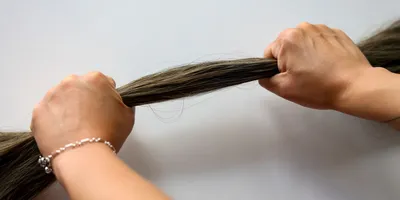Introduction: Rethinking Hair Strength in Mammals
At first glance, one might assume that thicker hair equals stronger hair. But recent research has flipped that assumption on its head. A team led by nanoengineering researcher Wen Yang at the University of California, San Diego, has discovered that thinner hair strands are actually stronger than their thicker counterparts across a variety of mammal species.
Published in Matter on December 11, the study delves into the micromechanics and structural integrity of mammalian hair, comparing species such as humans, elephants, bears, horses, and giraffes. The findings are not only surprising but have meaningful implications for material science, biomechanics, and bioinspired engineering.
Hair Strength by Species: Why Thicker Isn’t Always Tougher
Experimental Observations from Eight Mammals
The researchers collected and tested individual hair strands from eight species:
- Humans
- Bears
- Boars
- Horses
- Capybaras
- Javelinas
- Giraffes
- Elephants
The test method involved tying each hair to a mechanical tension tester, which gradually applied force until the strand broke. Despite the elephant hair being four times thicker than human hair (350+ μm vs. ~80 μm), it was only half as strong. In contrast, thinner hairs like those from humans and bears withstood greater tensile stress before fracturing.
The Science of Hair Structure: Why Thin Hair Performs Better
Hierarchical Design and Fracture Mechanics
Human and other mammalian hair share a hierarchical structure composed of:
- Cuticle: An outer protective layer
- Cortex: Inner fibrous core with microfibrils
- Embedded sub-fibers: Smaller structures linked by chemical bonds
The strength of hair arises from this multiscale organization. Interestingly, the failure mode changes depending on hair thickness:
- Thicker hairs (>200 μm), such as from giraffes and elephants, tend to break cleanly like a banana splitting.
- Thinner hairs (<200 μm), like those from humans and horses, fail through shear fracture, where zig-zag cracks spread through the cortex.
“Shearing is when small zig-zag cracks are formed within the material as a result of stress,” explains Wen Yang. “These cracks then propagate, and for some biological materials, the sample isn’t completely broken until the small cracks meet.”
Mechanical Reasoning: Defects and Stress Concentration
Co-author Robert Ritchie from UC Berkeley suggests that the phenomenon is a statistical artifact of size and defects:
“The notion of thick being weaker than thin is not unusual, and we have found that happening when studying brittle materials like metal wires. It’s a bit surprising to see this in hair as hair is not a brittle material, but we think it’s because of the same reason.”
Larger structures are more likely to contain microscopic defects, which act as stress concentrators and reduce tensile strength. This could explain why elephant hair, despite its mass, fractures more easily than a finer strand of human hair.
Future Applications: Bioinspired Material Design
Synthetic Materials That Mimic Hair’s Toughness
The study’s implications extend well beyond biology. Yang and her team believe that understanding the structural mechanics of hair could aid the development of bioinspired synthetic materials with enhanced strength-to-weight ratios and fracture resistance. By mimicking the unique hierarchical architecture of hair—where microfibrils are embedded within larger fibrous structures—engineers could fabricate materials that resist failure even under extreme tension.
Such innovations have promising applications in high-stress, performance-critical settings, including:
- Rescue ropes with improved flexibility and strength that outperform conventional synthetic fibers in emergency response scenarios.
- Lightweight construction materials that retain structural integrity while reducing overall mass, valuable in aerospace and marine engineering.
- Wear-resistant textiles for protective clothing and industrial fabrics that need to withstand repeated mechanical stress and abrasion.
Beyond strength, materials inspired by the natural toughness of hair could be tailored for elasticity, fatigue resistance, and durability—qualities that remain elusive in many modern composites.
However, replicating hair’s fine scale and complex internal bonding remains a technological challenge. Current methods can’t yet manufacture materials with the same hierarchical structure found in natural fibers.
“There are many challenges in synthetic materials we haven’t had a solution for,” Yang notes. “From how to manufacture very tiny materials to how to replicate the bonds between each layer as seen in natural hair.”
Conclusion: Learning from Nature’s Engineering
This cross-species analysis of hair strength reveals that nature’s designs don’t always conform to our intuitions. Thinner doesn’t mean weaker—especially when it comes to hair. Thanks to their complex microarchitecture and failure behavior, finer strands like human hair demonstrate remarkable tensile strength and toughness.
By unraveling the mechanics of how and why different hairs break, this research offers valuable insights not just into biology, but also into the future of strong, flexible synthetic materials.
Frequently Asked Questions (FAQ)
Which mammal has the strongest hair?
Human hair showed the highest strength relative to its thickness among the mammals tested, outperforming thicker hair from species like elephants and giraffes.
Advanced Lab Management Certificate
The Advanced Lab Management certificate is more than training—it’s a professional advantage.
Gain critical skills and IACET-approved CEUs that make a measurable difference.
Why is thin hair stronger than thick hair?
Thin hair breaks through a shear mode involving small internal cracks, which allows it to absorb more tension before failure. Thick hair typically breaks cleanly and more easily.
Can synthetic materials mimic the strength of hair?
Current technologies cannot fully replicate the hierarchical structure of natural hair, but research is ongoing to develop strong bioinspired materials for engineering use.












